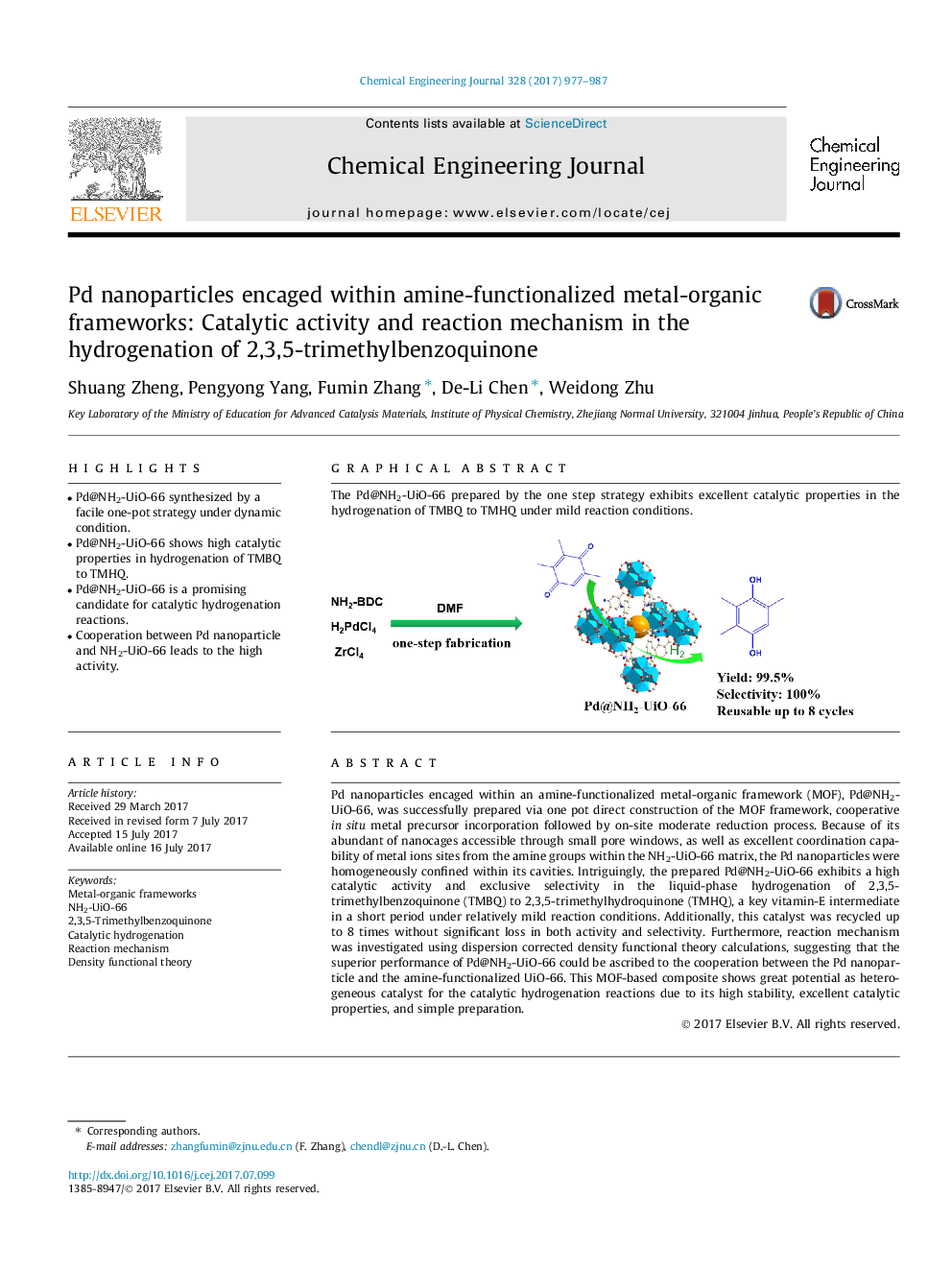| کد مقاله | کد نشریه | سال انتشار | مقاله انگلیسی | نسخه تمام متن |
|---|---|---|---|---|
| 6465333 | 1422950 | 2017 | 11 صفحه PDF | دانلود رایگان |

- Pd@NH2-UiO-66 synthesized by a facile one-pot strategy under dynamic condition.
- Pd@NH2-UiO-66 shows high catalytic properties in hydrogenation of TMBQ to TMHQ.
- Pd@NH2-UiO-66 is a promising candidate for catalytic hydrogenation reactions.
- Cooperation between Pd nanoparticle and NH2-UiO-66 leads to the high activity.
Pd nanoparticles encaged within an amine-functionalized metal-organic framework (MOF), Pd@NH2-UiO-66, was successfully prepared via one pot direct construction of the MOF framework, cooperative in situ metal precursor incorporation followed by on-site moderate reduction process. Because of its abundant of nanocages accessible through small pore windows, as well as excellent coordination capability of metal ions sites from the amine groups within the NH2-UiO-66 matrix, the Pd nanoparticles were homogeneously confined within its cavities. Intriguingly, the prepared Pd@NH2-UiO-66 exhibits a high catalytic activity and exclusive selectivity in the liquid-phase hydrogenation of 2,3,5-trimethylbenzoquinone (TMBQ) to 2,3,5-trimethylhydroquinone (TMHQ), a key vitamin-E intermediate in a short period under relatively mild reaction conditions. Additionally, this catalyst was recycled up to 8 times without significant loss in both activity and selectivity. Furthermore, reaction mechanism was investigated using dispersion corrected density functional theory calculations, suggesting that the superior performance of Pd@NH2-UiO-66 could be ascribed to the cooperation between the Pd nanoparticle and the amine-functionalized UiO-66. This MOF-based composite shows great potential as heterogeneous catalyst for the catalytic hydrogenation reactions due to its high stability, excellent catalytic properties, and simple preparation.
The Pd@NH2-UiO-66 prepared by the one step strategy exhibits excellent catalytic properties in the hydrogenation of TMBQ to TMHQ under mild reaction conditions.64
Journal: Chemical Engineering Journal - Volume 328, 15 November 2017, Pages 977-987